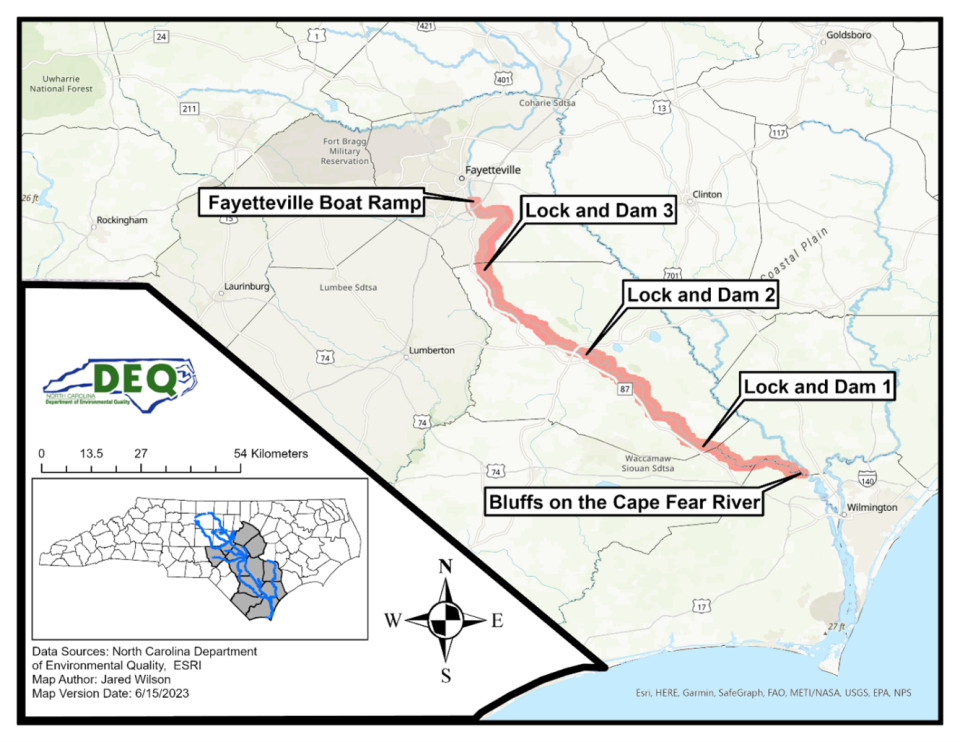Going fishing on the Cape Fear River? State health officials say you may want to reconsider.
Those considering fishing trips along the Cape Fear River may want to change their plans after new data found contaminants known as “forever chemicals” in fish from the river, the North Carolina Department of Health and Human Services said Thursday.
American shad, blue catfish, channel catfish, bluegill, flathead catfish, largemouth bass, striped bass and redear sunfish taken from the middle and lower parts of the Cape Fear River were all found to have varying levels of perfluorooctane sulfonic acid, also known as PFOS, according to a news release. PFOS belongs to the group of chemicals, per-and polyfluoroalkyl substances, or PFAS, known as “forever chemicals” due to their inability to break down in the environment, the release said.
Exposure to PFAS has been tied to a variety of health problems, including increased risk of testicular and kidney cancer, increased cholesterol levels, decreased fertility and impaired thyroid function, according to the release. Children, women of childbearing age, pregnant people and nursing people could be more sensitive to PFAS exposure, the release said.

The recommendations, which limit how often people should eat certain types of fish from the Cape Fear River, were created in the wake of new data and information from the Environmental Protection Agency, according to the release.
“We want residents to have these recommendations so they can make informed decisions about fish consumption, particularly if they regularly catch and eat fish from this part of the Cape Fear River,” said Dr. Elizabeth Cuervo Tilson, the state health director and chief medical officer.
Different species received different limitations due to higher levels of PFOS found in bluegill, flathead catfish, largemouth bass, striped bass and redear sunfish, according to the release.
The recommendations are as follows:
For children, women of childbearing age, pregnant people and nursing people
Do not eat bluegill, flathead catfish, largemouth bass, striped bass or redear sunfish
Only eat one meal per year across all species for American shad, blue catfish and channel catfish
For all other groups
Only eat one meal per year across all species for bluegill, flathead catfish, largemouth bass, striped bass and redear sunfish
Only eat seven meals per year across all species for American shad, blue catfish and channel catfish
Locations affected
The affected stretch of the Cape Fear River begins just south of Fayetteville and ends northwest of Wilmington, including the following popular locations, according to a map from the North Carolina Department of Environmental Quality:
Fayetteville boat ramp at 2517 Wilmington Highway, Fayetteville
Lock and Dam 3 at 1248 Bill Hall Road, Fayetteville
Lock and Dam 2 at 645 Lock #2 Road, Elizabethtown
Lock and Dam 1 at 996 Lock #1 Road, Riegelwood
Bluffs on the Cape Fear River near Wilmington
Government watchdog reporter Lexi Solomon can be reached at ABSolomon@gannett.com.
This article originally appeared on The Fayetteville Observer: Fish contaminated with chemicals near Fayetteville and Wilmington

